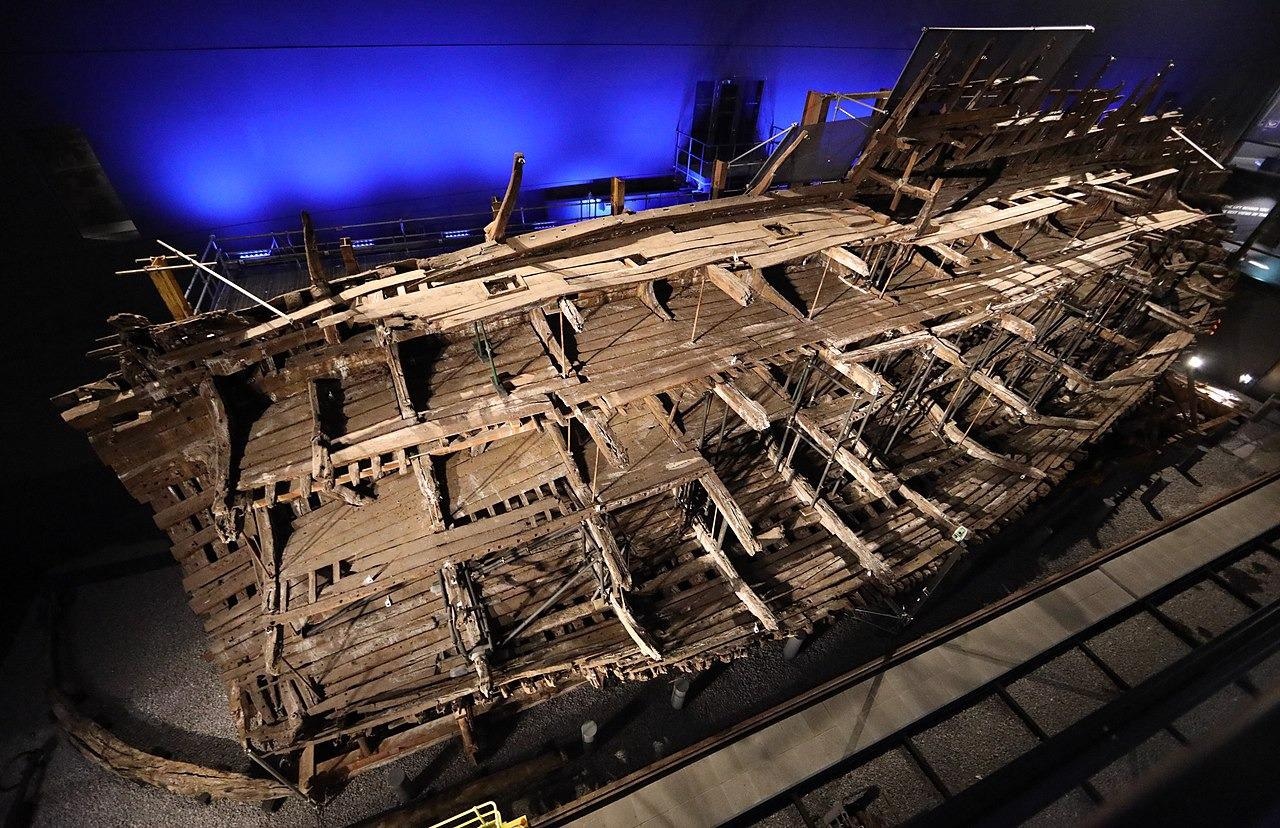New research published in the journal Matter - a new journal for ground-breaking multi-disciplinary materials sciences research - has showcased the work of a team of scientists who have utilized novel X-ray analysis techniques to identify products in the wood of shipwrecks that had previously been undetected.

Study: Location and Characterization of the Heterogenous Phases within Mary Rose Wood. Image Credit: Geni
Using this approach, it has been possible to detect and investigate nanoparticles that had originated from underwater bacterial activity. Findings have facilitated new and improved insight into the fate of the Mary Rose - King Henry VIII’s favorite ship and the royal navy’s flagship - that had capsized and sank in 1545 during the Battle of the Solent.
The wreck - a veritable time capsule for 16th century Tudor society - was salvaged in 1982 as part of a popular televised event, with conservators working to preserve this important historical artifact for future generations; this was a vast undertaking, and an enormous challenge.
This work is significant because the innovative and inspired use of synchrotron-based computed tomography and total scattering methods to identify and characterize the nanostructured species present in wood from the Mary Rose has led to the development of improved and better-targeted conservation methods.
“This is the first time zinc sulfide nanostructures - the bacterial byproducts - have been observed in Mary Rose wood,” highlights Serena Cussen, head of the Department of Materials Science and Engineering at the University of Sheffield, UK.
Cussen continued “… it is really challenging to assess the range of materials present within archaeological samples, which can include amorphous, nanostructured, and polycrystalline materials.”
Using X-ray analysis, it was possible to begin to address some of these challenges. It became evident that hundreds of years on the seabed had seen the wreck’s hull take up damaging iron and sulfur species, a result of degrading metal fixtures and artifacts and anaerobic sulfur-reducing bacteria, respectively.
Conservators had aimed to help compensate for wood degradation and material loss by impregnating the Mary Rose with poly-ethylene glycol (PEG), inhibiting shrinkage of the hull on drying and ensuring sufficient mechanical stability for public display.
The Mary Rose was dried in the air during the final stage of active conservation, but it was discovered that this exposure to oxygen had actually prompted the formation of acidic species with the potential to damage the wood even further.
It was noted that zinc sulfide nanoparticles were present in the wood. These were likely deposited by underwater bacteria, and it was discovered that these deposits could actually act as pre-cursors to acid attack on the wood, which could commence upon exposure to air.
The extent of this problem is widely recognized and severe, with potentially several tons of sulfur-containing species and the products of PEG breakdown residing in the Mary Rose hull.
This explained the issues occurring during the final drying stage of the conversation project; these valuable insights will be essential in informing next-generation conservation strategies and minimizing issues with future treatments.
The researchers used a powerful combination of X-ray computed tomography and pair distribution function analysis (ctPDF) to map the locations of compounds lodged in the material, allowing them to determine the distance between the PEG and nanoparticle products in order to highlight any potential threats to the integrity of the wood.
The use of ctPDF during this project enabled accurate identification of the structure of polycrystalline, amorphous, and other nanomaterials in what has long been a challenging, extremely complex, heterogeneous archaeological sample.
As well as supporting the conservation of an important historical artifact and ensuring this will be available for public enjoyment for years to come, the approach demonstrated in this work offers the potential to re-assess and address the degradation of a wide range of existing historical artifacts in a targeted, highly specific manner.
Work on this exciting and vital project is ongoing, for example, an investigation into the potential role of zinc in cellulose degradation in combination with iron and sulfur, and the impact this may have on a range of other artifacts from the Mary Rose such as textiles, leather, or brick.
Overall, these novel approaches have the potential to afford conservators new insight into the most appropriate means of conserving important pieces of history.
“What our results have done is alert conservators to these previously unknown deposits and expand the study of degradation-inducing materials. Knowing the structure of these potentially harmful species also allows us to design targeted treatments for their future removal,” concludes Cussen.
Reference
Kenson, K et al. Location and Characterization of the Heterogenous Phases within Mary Rose Wood. Matter. https://www.cell.com/matter/fulltext/S2590-2385(21)00498-7#secsectitle0020
Disclaimer: The views expressed here are those of the author expressed in their private capacity and do not necessarily represent the views of AZoM.com Limited T/A AZoNetwork the owner and operator of this website. This disclaimer forms part of the Terms and conditions of use of this website.